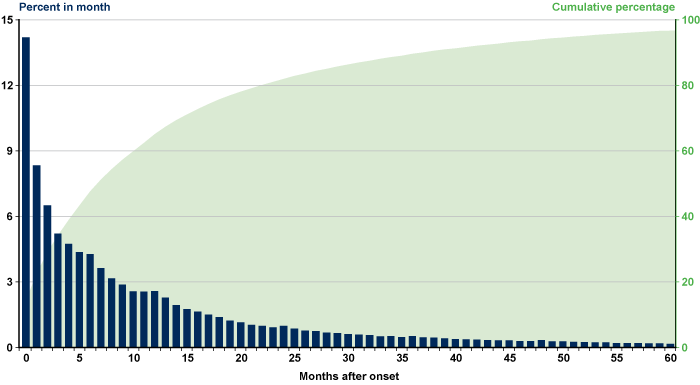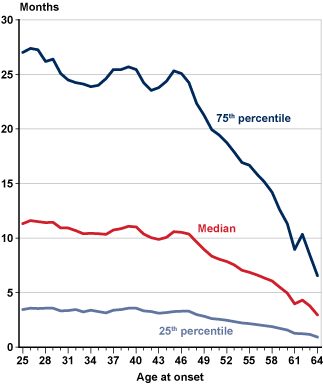The Social Security Bulletin has an interesting article titled The Time Between Disability Onset and Application for Benefits: How Variation Among Disabled Workers May Inform Early Intervention Policies. Obviously, the article is concerned with how this gap time affects rehabilitation. I don't think the length of the gap time will matter much as far as rehabilitation is concerned are since I think that there are few applicants for Social Security disability benefits who can realistically be rehabilitated. Rehabilitation is a mirage based upon the misconceptions that Social Security disability claimants aren't all that sick or that they many suffer from problems that one can find a way around.
The article does give some historic numbers on a topic of interest to me, at least, which is how long people wait after becoming disabled before they file disability claims with Social Security. I've wondered whether factors such as difficulty in contacting Social Security to file a claim and public perceptions about how easy or difficult it is to be approved for Social Security disability benefits affect how long people wait to file claims. Changes in the lag time between onset of disability and claim filing could affect the rate at which claims are filed. Unfortunately, the article doesn't give information to show how the lag time has changed over time but it does give some historic numbers. During the time period 2013-2014 the median gap time was 7.6 months. Don't ask me why they didn't use a more recent time period. Below is a chart from the article:
 |
| Click on image to view full size |
I would have been very interested to see whether this gap time was stable over time. What was it in 2010 compared to 2019? Unfortunately, the authors do not present such data.
However, the authors do present data showing that the younger that disabled people are, the longer they wait to file disability claims:
 |
| Click on image to view full size |


